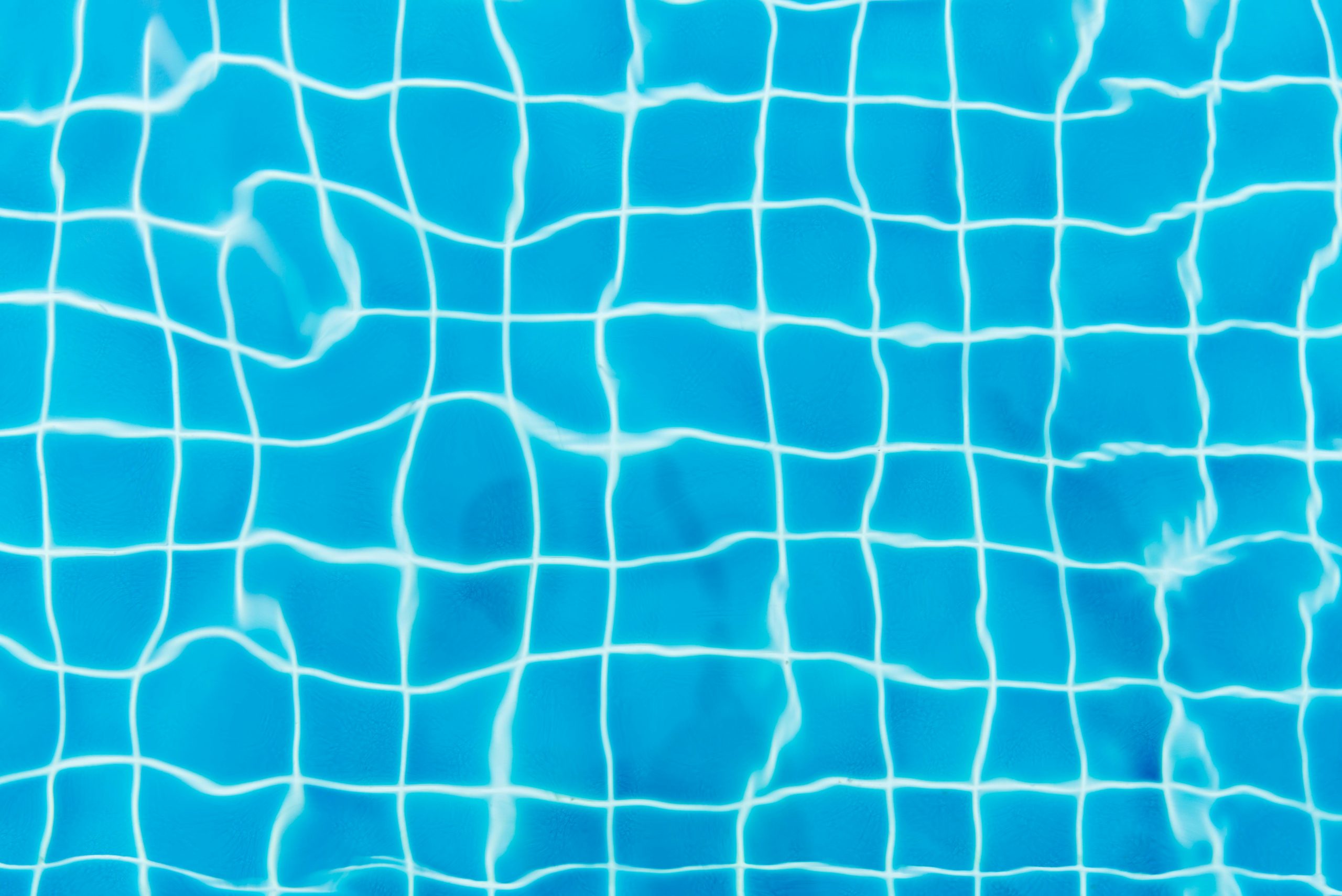- Determine the cause of water loss first: Check if evaporation, splash-out, or backwashing could explain the drop before assuming it’s a leak.
- Start with a visual inspection: Examine the pool liner, fittings, walls, and accessories for obvious tears, cracks, or loose connections.
- Use simple tests to pinpoint leaks: The bucket test and dye testing help identify whether water loss is from a leak and locate small liner leaks.
- Check plumbing and filter systems carefully: Inspect pumps, hoses, connections, filter housings, and backwash lines, as plumbing leaks are common.
- Temporary fixes can hold water: Vinyl patches, epoxy, or tightening fittings can stop minor leaks until a permanent repair is arranged.
- Know when to call a professional: Rapid water loss, hidden plumbing leaks, or structural issues require professional leak detection and repair.
Discovering a leak in your above ground pool can be frustrating, especially when you notice your water level dropping faster than usual. Not only can leaks waste water, but they can also lead to higher utility bills and potential damage to your pool’s structure. The good news is that with a little patience and the right approach, finding a leak in your above ground pool is entirely possible. This step-by-step guide will walk you through the process, helping you save money and protect your pool.
Why Is My Pool Losing Water?
Before knowing how to find a leak in a pool, it’s important to determine whether the water loss is truly a leak or a result of natural evaporation. Pools can lose water for a few reasons:
- Evaporation: On hot, sunny days, pools can lose up to ¼ inch of water per day.
- Splash-out: Regular use, especially with kids or pets, can cause water to splash out.
- Backwash: If your filter system requires frequent backwashing, it can lower water levels.
- Leaks: Actual leaks are less common but can occur in the liner, plumbing, or fittings.
If the water loss seems excessive and can’t be explained by evaporation or normal usage, it’s time to check for a leak.
Step 1: Inspect the Obvious Areas

Start your leak search with a visual inspection. Some leaks are easy to spot if you know where to look:
- Pool liner: Look for tears, cracks, or separations at seams.
- Fittings and connections: Check where the pump, skimmer, and return lines connect. Loose fittings can cause leaks.
- Pool walls: Look for bulges, cracks, or uneven areas that may indicate structural issues.
- Pool accessories: Check ladders, slide mounts, and any attached equipment for water around their bases.
A flashlight can help spot small leaks along the liner or under the coping. Keep a notepad handy to mark areas you suspect may be leaking.
Step 2: The Bucket Test – Is It Really a Leak?
The bucket test is a simple way to determine whether your pool is losing water from a leak or evaporation. Here’s how to do it:
- Fill a bucket with pool water to about an inch below the rim.
- Place the bucket on a step inside the pool so it’s partially submerged.
- Mark the water level inside the bucket and the pool’s water level on the outside of the bucket.
- Wait 24 hours.
- Compare the water levels.
How to interpret results:
- If the pool water drops more than the water inside the bucket, you likely have a leak.
- If both drop at the same rate, evaporation is the likely culprit.
Step 3: Check the Pump and Filter System
Plumbing leaks often occur in the pump and filter system. Inspecting these areas early can save a lot of time:
- Pump seals: Check the pump lid and the o-ring seal. Leaks here are common.
- Hoses and connections: Look for cracks, loose clamps, or worn fittings.
- Filter housing: Check for cracks or water around the base.
- Backwash line: Ensure the line isn’t leaking when the system is running.
Running the pump while checking for wet spots or dripping water can help you pinpoint leaks.
Step 4: Test for Liner Leaks with Dye
If a visual inspection doesn’t reveal a leak, dye testing can help. This method works well for small leaks in the liner or near fittings:
- Use pool dye or food coloring.
- Turn off the pool pump to reduce water movement.
- Slowly squirt dye near suspected leak areas (e.g., seams, fittings).
- Watch the dye: it will be drawn into the leak if there’s an opening.
Tip: Conduct this test slowly and methodically to avoid missing small leaks.
Step 5: Inspect Plumbing Lines and Valves
If your above ground pool has underground plumbing or external piping, leaks here can be harder to detect. Look for signs such as:
- Wet spots or puddles: Unexplained water around the pool area.
- Sinking ground: Areas of soil that appear lower or softer than surrounding areas.
- Loss of water during pump off: Turn off the pump for a few hours; if water continues to drop, underground plumbing might be leaking.
A pressure test kit can help check for leaks in plumbing lines without digging them up unnecessarily.
Step 6: Monitor Common Weak Points
Certain areas are more prone to leaks due to wear and tear or material stress:
- Seams of the liner: Liner seams can separate over time.
- Skimmer and return fittings: Rubber gaskets or fittings may crack.
- Pool wall panels: Rust, corrosion, or bending can cause gaps.
- Bottom of the pool: If your pool has a sand or vinyl bottom, small holes or tears can occur.
Keeping a regular maintenance schedule can help catch problems before they become serious.
Step 7: Temporary Fixes Before Professional Help
Some leaks can be temporarily repaired while you arrange a professional repair. Small liner tears, minor cracks, or loose fittings can often be managed with simple methods:
- Vinyl liner patch: For small holes in the liner, cut a round patch slightly larger than the damaged area. Apply vinyl adhesive to the patch, fold it glue-to-glue to protect the adhesive while positioning it underwater, then carefully place it over the hole. Press the edges flat and hold for 10–15 seconds to ensure a secure seal. Round patches are ideal because they are less likely to curl at the edges compared to square ones.
- Epoxy or waterproof sealant: Use these to temporarily seal minor cracks in pool fittings, return lines, or walls. Ensure the surface is clean and dry for the best adhesion.
- Tighten clamps and fittings: Inspect hoses, skimmers, and pump connections. Tightening or repositioning loose fittings can stop small leaks immediately.
Temporary fixes like these can hold water for several weeks, giving you time to plan a permanent repair. However, larger leaks or structural damage should be addressed promptly by a professional to prevent further water loss or pool damage.
Step 8: When to Call a Professional
Some leaks are difficult to find and require professional attention. Call a pool technician if:
- You cannot locate the leak after multiple tests.
- Water loss is rapid and persistent.
- Plumbing lines or major fittings are involved.
- Structural issues like wall separation or corrosion are present.
Professional leak detection often involves specialized equipment like electronic leak detectors, pressure testing kits, or even cameras for underground lines.
In Closing
Learning how to find a leak in an above ground pool doesn’t have to be intimidating. By systematically inspecting your pool, using simple tests like the bucket test or dye method, and monitoring plumbing and fittings, most leaks can be found and fixed. With a little patience and the right approach, your pool can stay full, functional, and ready for endless summer enjoyment.



